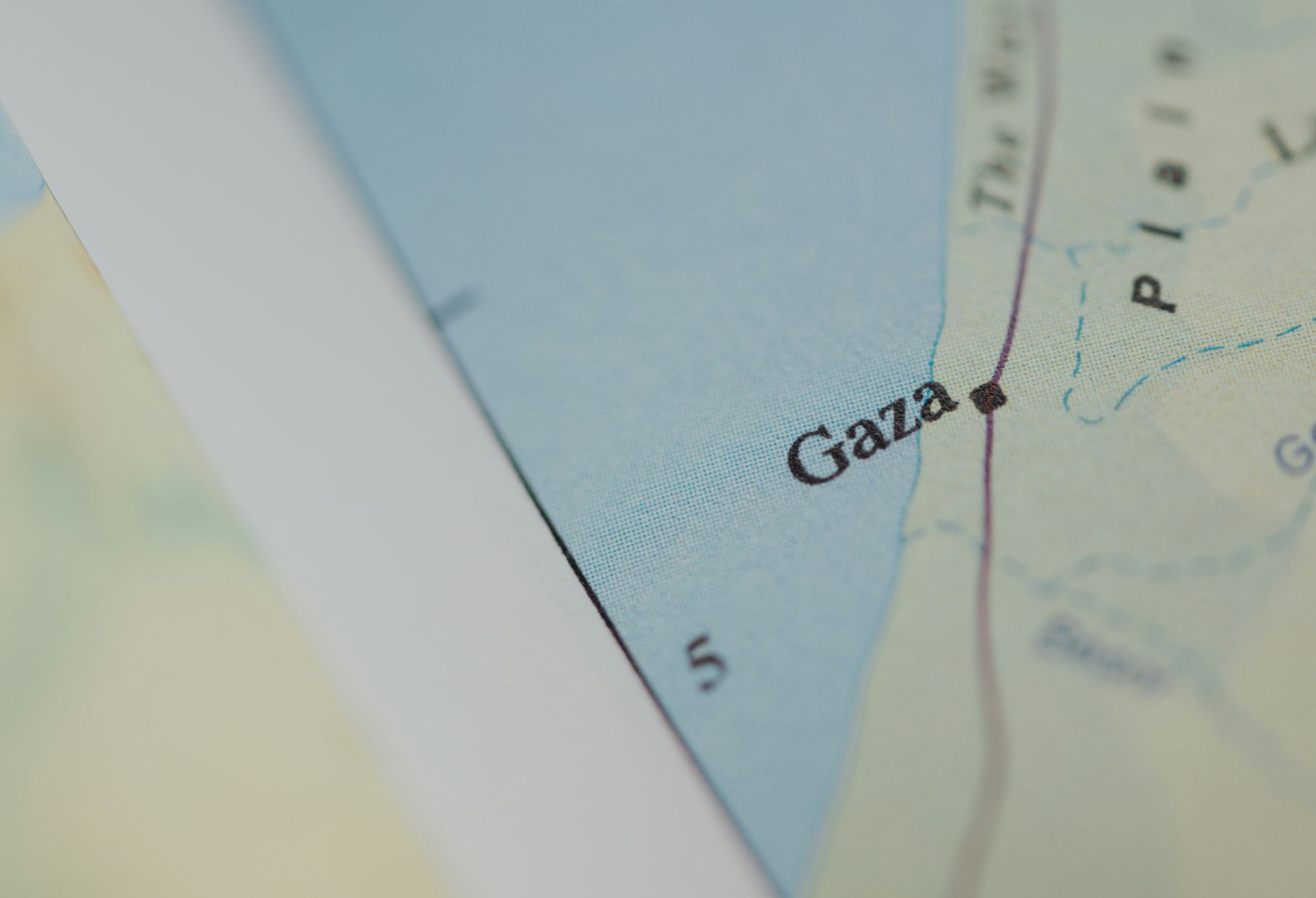Going Back to What You Know: October 7 and Order in the Middle East
22nd Aug 2024 by Simon Mabon

Scholars of Middle Eastern politics typically point to 1979, 2003 and 2011 as years that have a significant impact on the ordering of regional politics. In 1979 the Iranian revolution, the seizure of the Grand Mosque in Mecca and the Soviet invasion of Afghanistan - amongst other things - positioned Islam firmly within political and security calculations. In 2003, the US led invasion of Iraq removed a central pillar of regional politics and the increased military presence of Washington in the region reverberated across the Middle East. In 2011, the protests of the Arab Uprisings highlighted the importance of revolutionary activity, toppling authoritarian leaders and shaking the foundations of political life across the region. The Israeli journalist Ari Shavit declared that the Hamas terrorist attacks of 7th October constituted a historical turning point, suggesting that 2023 marked a significant change in the way in which Middle Eastern politics was ordered. While the death toll of the attacks of October 7 and the genocidal destruction of Gaza are harrowing, they are emblematic of status quo currents rather than pointing to a significant change in the way regional politics is ordered.
And yet, prior to October 7 the region appeared on the brink of a substantive shift in how it was ordered. The fundamental principles at play in shaping political life appeared to be shifting, seen in an apparent US withdrawal, Saudi-Iranian normalisation, talks between the Saudis and the Houthis, and the possibility of Saudi-Israeli normalisation. Such events pointed to a broader change in the ordering principles of regional politics, moving away from the constellation around a Washington-led consensus towards an alternative way of creating order, one focused more in the region itself. Amidst these machinations, the Palestinian question remained unresolved, despite the assurances of those who signed the Abraham Accords. October 7th and its aftermath thwarted any moves towards change, re-asserting the old order in the process.
Neighbouring Arab states who had previously signed peace treaties with Israel were reluctant to help the Palestinian cause. Both Egypt and Jordan vociferously rejected Israeli plans to displace Palestinians across their borders, albeit perhaps more driven by domestic security calculations rather than a broader commitment to the Palestinian cause. None of the signatories of the Abraham Accords broke relations with Israel over its actions in Gaza and when Iran launched a barrage of missiles on Israel in March, Washington’s Arab allies worked in conjunction with the US to protect Israel. The so-called ‘shadow war’ between Iran and Israel has escalated in recent months, albeit in a somewhat performative way with tit-for-tat strikes that appeared telegraphed to prevent the descent into a regional war. Yet the killing of Hamas’ political leader Ismail Haniyeh in Tehran was a symbolic act seemingly designed to provoke a significant reaction and to solidify the alliances ordering regional politics.
Though the Biden administration has offered a mild criticism Israeli actions and cautioned against a region-wide escalation, it has continued to sell arms to Israel and doubled down on its political and ideological support. A full US withdrawal from the Middle East has been halted, with a strike group of fighter jets and navy warships accelerating its deployment to the region. The Netanyahu government’s desire to preserve a US presence in the region in the face of an apparent threat from Iran and its allies is an effort to preserve the status quo of the past two decades.
Since 2003, regional politics has been shaped by a struggle to impose order by two loose yet competing blocs. The first, organised broadly around a US led-security constellation comprised of Israel and the Sunni Arab monarchies and Republics – the so-called axis of moderates has long sought to limit gains made by the ‘axis of resistance’ comprised of Iran and a loose network of transnational non-state actors including Hamas, Hizballah, Syria, the Houthis, and Iraqi militias. This period was characterised by broader efforts to frame Iran as an existential threat, one that warranted a military strike. Officials from Israel and across the Gulf all called for direct US military action against Iran, perhaps most famously seen in King Abdullah of Saudi Arabia’s plea to “cut off the head of the snake”. Narratives of perfidious Iranian influence across the region – best captured in the narrative of the ‘Shi’a Crescent’ – shaped the thinking of political elites. In conversation with US officials, King Hamad of Bahrain called for normalisation with Israel in the face of the perceived Iranian threat. Yet the question of Israel posed serious dilemmas for Arab Gulf leaders, as the events of the summer of 2006 demonstrate.
When Hizballah kidnapped 2 Israeli soldiers during incursion across the border, the Party of God lit the touchpaper on a 34 day long conflict that culminated in the destruction of large parts of Beirut and south Lebanon. The onset of war left Arab leaders on the horns of a dilemma: to support Israel against Hizballah and, by extension, Iran, and to risk the ire of their own populations, or to support Hizballah, generate good will from their populations, and to empower the Party of God and Iran in the process. [1]
Saudi Arabia, the architect of the Arab Peace Initiative – designed to ensure the creation of a Palestinian state – had portrayed the Kingdom as the main supporter of the Arab cause against Israel yet nominally chose to side with Ehud Olmert and the IDF against Hizballah. While leaders were largely taciturn, Saudi owned media outlets were publicly critical of Hizballah, calling for a distinction between “legitimate resistance and uncalculated adventures”. Stuck on the horns of this dilemma, Arab leaders were criticised as “half-men”, while Hassan Nasrallah, Mahmoud Ahmadinejad and Bashar Assad were perhaps the three most popular figures across the region by virtue of their continued opposition to Israel.
Similar sentiment can be found across the Middle East today. The rising popularity of the Houthis, a deeply intolerant and violent group based in Yemen, has accrued widespread support by virtue of their attacks on Red Sea shipping. Similarly, Hamas, Hizballah and Iran have all benefitted from their opposition to Israel, galvanising support from unlikely sources. In Lebanon, some Sunni groups have expressed support for Hizballah’s actions against Israel. Sheikh Mohammad Takkoush, the head of Al-Jamaa Al-Islamiya – a Sunni political and militant group – expressed solidarity with Hizballah as a “national, religious and moral duty […] to defend our land and villages […] in support of our brothers in Gaza. Other long-standing critics of Hizballah have found solace in the Party of God’s militant resistance. Whether these dynamics shift the political landscape in Lebanon in the long term remains to be seen, with Hizballah’s reticence to give up its arms continuing to provoke anger and concern amongst other members of the power-sharing agreement. Yet the currents of change can be felt.
It remains to be seen if these currents manifest in substantive change across the region, marked by a transformation of the principles underlying order rather than merely shifting dynamics within the current order. The genocidal violence unleashed in Gaza and beyond serves to highlight how many across the region remain invested in the status quo, fearful of what change may bring.
[1] A deeper analysis of the events of 2006 is offered in this piece by Andre Bank and Morten Valbjorn.
